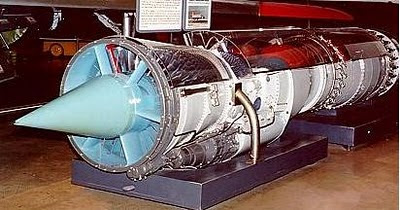In 1967, the United States Navy and United States Air Force got together to invite bids for the construction of jet engines for the F-15 Eagle and the F-14 Tomcat. The combined program was called Advanced Turbine Engine Gas Generator (ATEGG) with goals to improve thrust and reduce weight to achieve a thrust-to-weight ratio of 9. The program requested proposals and would award Pratt & Whitney a contract in 1970 to produce F100-PW-100 (USAF) and F401-PW-400 (USN) engines.
Specifications for the Pratt & Whitney F100
Type: Afterburning turbofan
Dry weight: 3,740 lb
Length: 191 in
Diameter: 46.5 in
Compressor: Dual Spool Axial compressor with 3 fan and 10 compressor stages
Bypass ratio: 0.36:1
Combustors: annular
Turbine: 2 low-pressure and 2 high-pressure stages
Maximum thrust: 17,800 lbf (79.1 kN) military thrust; 29,160 lbf (129.6 kN) with afterburner
Overall pressure ratio: 32:1














